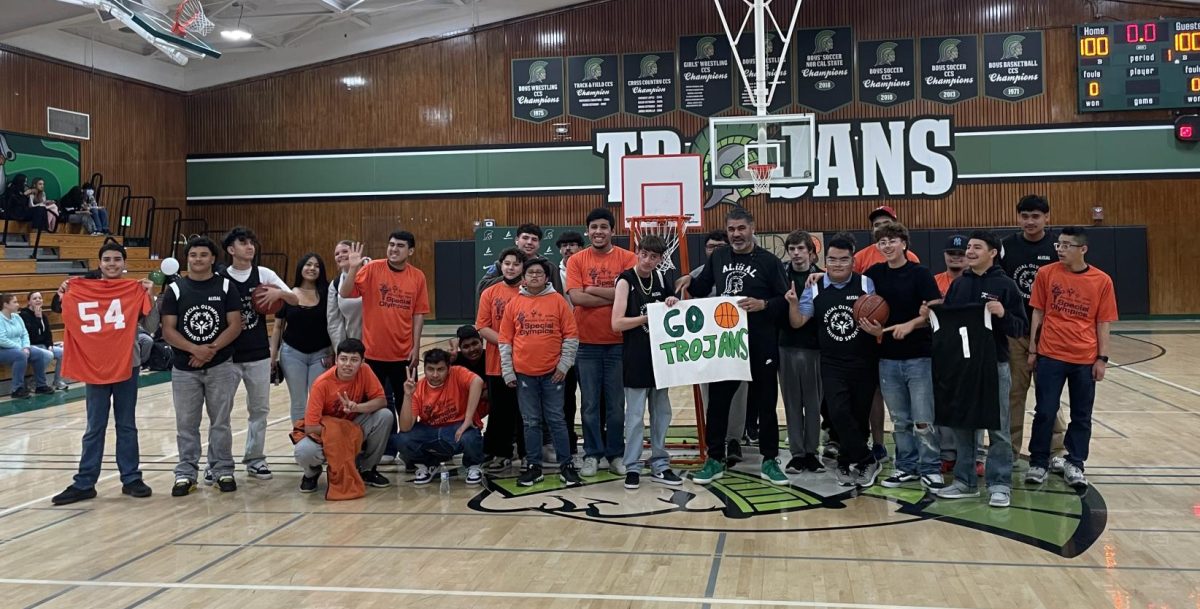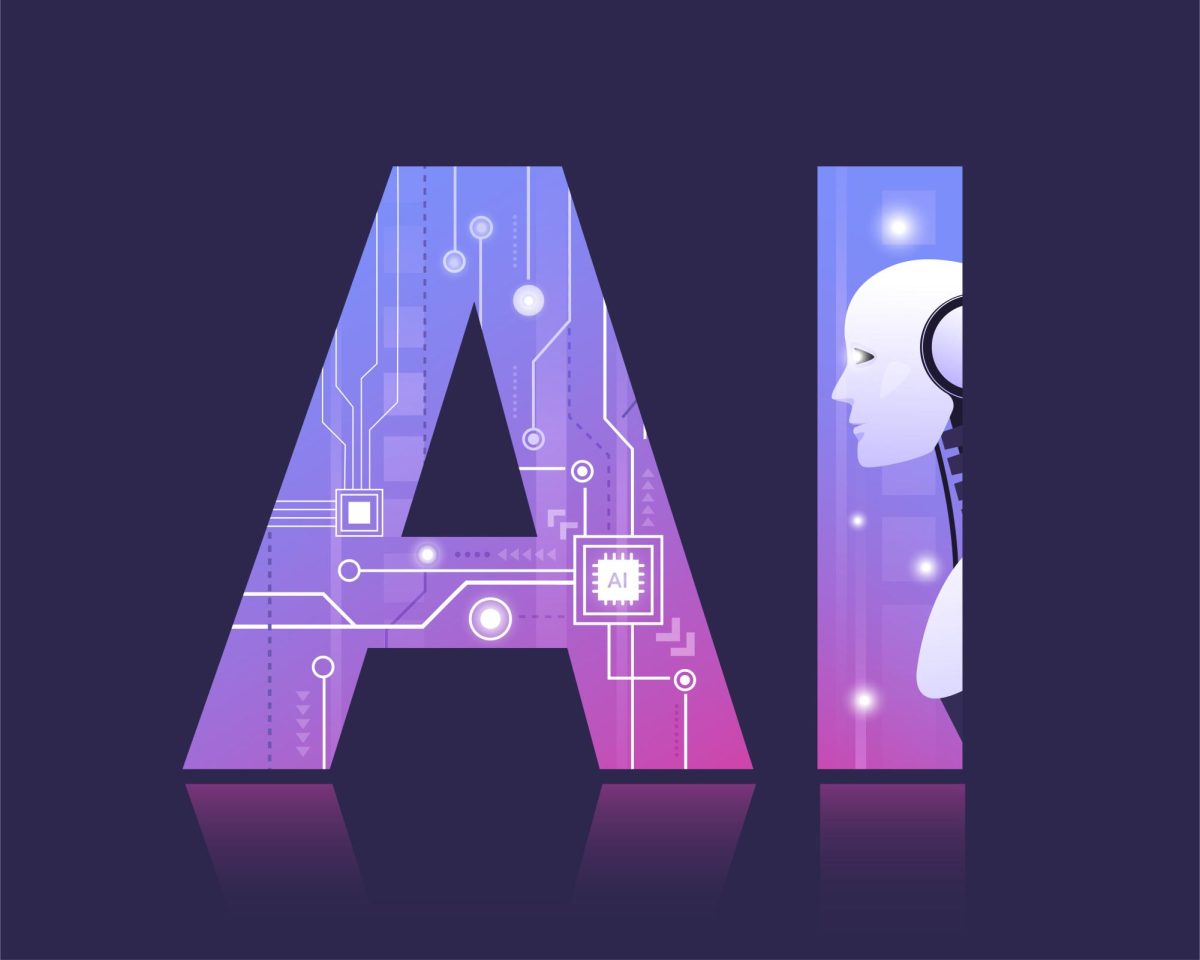Artificial Intelligence, otherwise known as AI has been here for a long time; recently, it has started to rise in popularity.
Alan Turing was the first to coin the concept of “Artificial intelligence,” it was first used to measure computer intelligence. AI is commonly used in different fields, from finance to healthcare.
Two types of AI are commonly used, Narrow AI is used for direct and simple tasks such as Siri which performs tasks like setting alarms and answering questions while Strong AI performs more complex, human-like tasks such as self-driving cars. Recently, AI has crept its way into the education systems in good and bad ways.
There has been an ongoing debate about whether it is good or bad for students of this current generation. Many people argue that AI is a non beneficial thing that shouldn’t continue to evolve and that it isn’t a helpful resource for students in school.
Other people argue that it should be accepted and embraced by schools since it could support students to help with coursework.
Teachers worry that students will be misusing AI. AI is a double-edged sword; it offers positive and negative opportunities and presents significant challenges for students. They’re concerned that students will use AI to create plagiarized work. This would cause schools to be cautious around AI, creating tension and suspicion between teachers and students, whether the work is done authentically or by AI. There would also be worry about students engaging in activities that violate/exploit AI tools for unhonorable purposes.
In the future, we could have doctors, lawyers, and other influential people, who work their way up the industry by using AI to obtain their jobs. It would lead to people who would not know anything about the job or how it works step by step. All the major careers, things that take time to be able to master and have a reasonable knowledge of how it works would be attained by just using AI. People would become too dependent on AI, leading to a society going downwards rather than upwards, essentially devolving.
AI is a very powerful tool, it can create art, images, and essays. Many worry that it’ll take away creativity and create a lack of passion for learning new things by having AI do their work. But like any new technology, it is a tool and can be used for good and bad, and it is important to teach people to use it responsibly.
If people and schools learn to embrace AI, rather than hide it and stop assuming it is an unacceptable resource, it will benefit students since they can be taught how to use it responsibly by the school or teachers. AI can help students personalize learning, providing students with feedback on their work and ways they could improve their work. It would be a game changer if schools had AIs that were personalized to help students. Students would be able to see a greater perspective on AI and its benefits towards them using it responsibly rather than negatively.
In the past, I’ve used AI to get a better understanding of a certain topic that I found difficult to understand. Before resorting to AI, I used Google to search the topics I didn’t understand, but despite numerous attempts, I got unrelated results that I wasn’t looking for on Google. As a result, I had to turn towards AI. Therefore, I could dive deeper into the topic, and it helped me gain a greater understanding.
Many different AIs help with the same thing, the AI that I have the most knowledge about is ChatGPT. ChatGPT has proven itself to be a formidable source of information with valuable educational resources. I believe that AI is something that could benefit students. It would provide students with a resource that can help them with their academics. There are two versions of ChatGPT; GPT-3.5 the free model and GPT-4 the paid model, which is considered the “Smartest and most capable model” according to the developers.
Students could use AI responsibly by using it to find information that they don’t know or understand. It would be a good resource since it provides them with semi-professional responses from its available knowledge and can even offer specific information. AI is known for processing information quickly and accurately, which makes it a more reliable source for students than Google. Google gives a lot of information, which is good, but it provides you with irrelevant sources making it less reliable.
Exploring AI can be interesting. I found out that there are certain AIs designed for specific things, like PhotoMath, which is designed to solve math equations. Although its initial purpose was to help people figure out how to solve math problems step-by-step, people have rejected the educational aspects of it and only use it for quick answers.
This isn’t beneficial, since it isn’t being used responsibly, which could be bad since the students won’t be learning the actual material or benefiting from it, and they could get the answer wrong due to different methods of solving.
Students can benefit from PhotoMath by solving their math equations first and then double-checking their answers with PhotoMath. It is important to recognize that there are different forms of solving and putting a math equation. I’ve used PhotoMath, and it did give me the correct answer, but in some cases, it gave me different answers from what I got when I solved the equation. This shows that you can’t always rely on it to give you the correct answers all the time but it can help guide you towards the right answer or if you got something different.
AI like ChatGPT can help you with anything, for example, Chatgpt can solve math problems, something that I didn’t know before I explored it. It can also be used with other subjects, such as chemistry, history, Spanish, etc. I asked it a question from chemistry class (I solved the problem first), which was an alpha decay problem, and then I used ChatGPT to double-check my work. It gave me a different answer from what I had gotten; so I asked ChatGPT if it was correct and it said no, that it had made a mistake, proving that it still had issues and is far from perfect.
Interestingly enough, it can also help people with complex things like writing Javascript, PHP, and other similar programming languages. Although it does help you with creating it, you still need to put most of the work in, since it doesn’t develop the programming languages itself; people have to design and develop languages depending on requirements and their goals. The AI does not do all the work, it just provides suggestions and insights on the programming languages, while the work and programming itself, are done by the human programmer.
ChatGPT can even assist you in writing a journalism story, you just need to provide it with a specific topic, and details on what you want to write about. I asked it to write me a journalism story on Climate Change. The results required no other refinements, it gave me an instant result right away.
While AI can do almost anything, AI does have its struggles and its imperfections. The content met the desirable standards, I’d rate it an 8 out of 10 because it does have human-like characteristics, but it needs improvement on the depth of the topic and the possible solutions in more adequate detail.
I asked the AI if it could further improve the work it provided. Interestingly enough, it does seemingly improve its work, which brings it up to a 9 out of 10, or maybe even a 9.5 out of 10, since it captures a better image of the story it is telling, it also does seem to have more emotions and shows them more effectively. It seems to lean more towards the urgency of the situation faster while showing hope and other emotions. Although the work it provided is better than it was at first, the length of the story is still small compared to the human-created work, it seems to lack concrete evidence and examples on the topic.
All of these are ways in which AI can be used beneficially by students. It provides good support while also being a mentor, which can help students find ways to improve their work in different categories. Students can rely on it when they do not have the assistance of a teacher or a mentor to ask questions.
We cannot determine what will happen with AI in the future. It could be positive or negative, but all we can hope is that it doesn’t become an epidemic of people misusing it. To discourage students from misusing AI in the future and present, schools should embrace it. Teaching students how to use AI responsibly is an essential step. Teaching students to use it wisely helps enhance their work and supports them in a way they cannot attain without a mentor. If schools do not embrace AI and teach their students how to use it responsibly, it could affect them negatively since most students already know about AI, but without teaching them to use it responsibly it will just create chaos and a wave of plagiarized work.
























